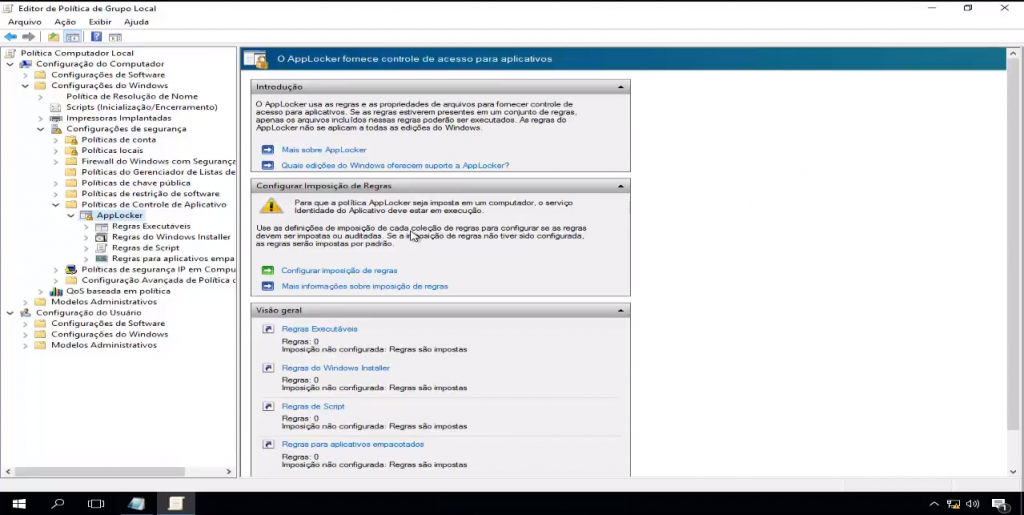

AppLocker is good when you want relatively granular control over which applications are allowed to run in your network. As we talked about with EMET, it is meant to be one layer in a multi-layer defense. This feature is similar to (but not exactly the same as) other Mandatory Access Control (MAC) measures in Linux such as SELinux and AppArmor.ĪppLocker is not intended to be the only defense mechanism you employ in your organization. It is typically deployed through Group Policy either on a single computer or across a domain. Packaged app rules in AppLocker are available in versions of Windows with apps (Windows 8 / Server 2012 and higher).

You can also control scripts (PowerShell and Visual Basic scripts), packaged apps and their installers, DLLs, and Windows Installer files (.msi).
#Applocker windows 2012 .exe#
exe files are not the only executables you can control with AppLocker.
#Applocker windows 2012 pro#
As a rule of thumb, on the client side, you need at least the Pro version of Windows (Pro, Enterprise, Ultimate). Different versions of Windows allow you to do different things with AppLocker. On the server side, it was introduced in Windows Server 2008 R2. On the client side, AppLocker was introduced with Windows 7. These rules are defined on aspects of the application (usually based on its digital signature) and who is trying to use it. It does this based on a set of rules defined by the administrator of the domain or computer. More after the jump.ĪppLocker is a mechanism in Windows for controlling access to applications.
#Applocker windows 2012 how to#
Finally, we will talk about how to use it. Then, we will talk about why you would want to use it. We will start with a discussion of what it is. That’s how simple it is to use AppLocker to block any file from getting executed.Hey everyone - Today, we are going to talk about AppLocker. The rule to block Notepad++ gets created and users are not allowed to execute Notepad++ on the system. Notepad++ Files not allowed to execute get populated, as shown.Ĭlick Next, give the name for the rule and click Create, as shown. We will deny Notepad++ from being executed, as shown.Ĭlick OK. Select Browse Folders and navigate to the path for the executable/file you want to deny execution. By default, rules applies to everyone, you can select User or Group as per the need: Select Deny for denying certain files from getting executed. Default Rules get created, as shown below.Ĭreate New Rule by right-clicking Executable Rules, as shown.Ĭlick Next. Under Application Control Policies, right-click on Executable Rules under AppLocker as shown.Ĭlick on Default Rules. Type local security policy and click “Run as Administrator”. The following are the steps to create a rule in AppLocker.

The following are the types of files AppLocker is capable of blocking. AppLocker rulesĪppLocker is capable of blocking different file types.

For a group of computers, it can be done using the Group Policy Management Console. For standalone systems, rules can be enforced using the Local Security Policy editor (secpol.msc). AppLocker is inbuilt into Windows OS enterprise-level edition and needs no additional installation onto the system.


 0 kommentar(er)
0 kommentar(er)
